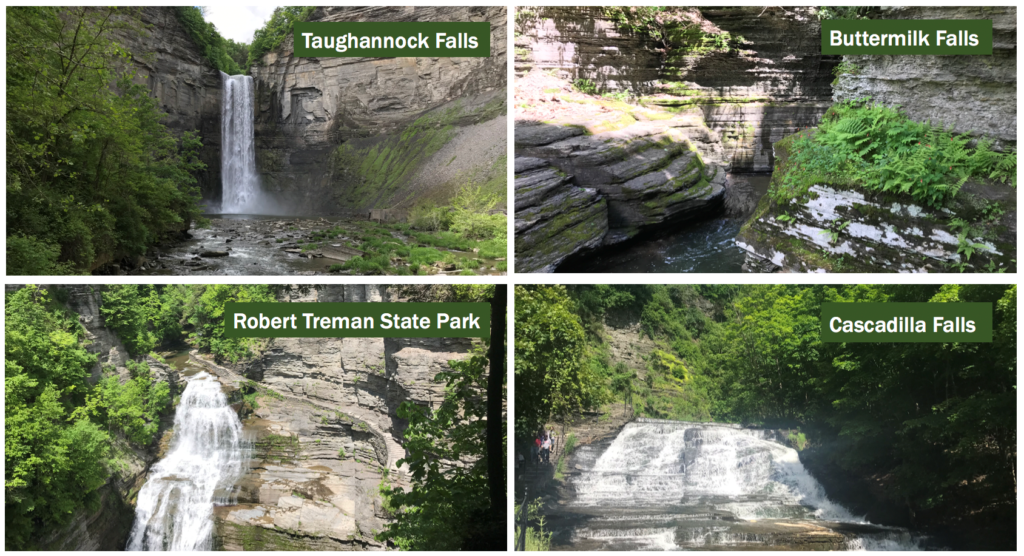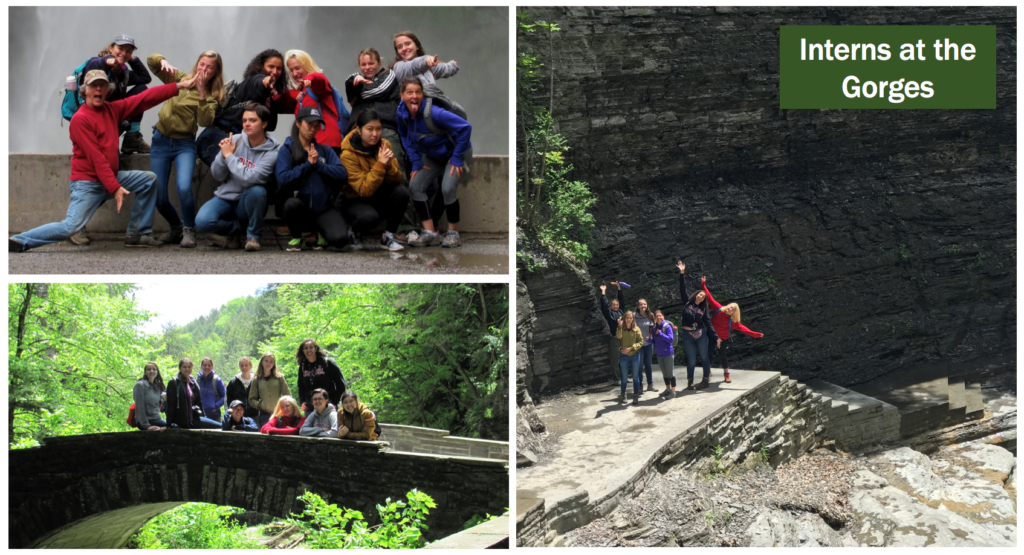
Part of the Cornell Botanic Garden intern experience is participating in unique, weekly ‘Learning Mondays’. On these Mondays, interns explore the different working parts that go into maintaining and stewarding the gardens and natural areas. These Mondays also facilitate team building and interactions with staff, fostering community. A vital part of the internship, Learning Mondays are a way for interns to have a holistic picture of the organization. Activities range from learning about fundraising and financial management to learning about how we manage our greenhouses.

For our first Monday, we went to four gorges around Ithaca–Taughannock Falls, Robert Treman State Park, Buttermilk Falls and Cascadilla Gorge. Sarah Fiorello, interpretation coordinator for Cornell Botanic Gardens, led the tour. Sarah as particular expertise in the natural history of area gorges, having previously worked for New York State Parks. Interpretation is a communication process that forges emotional and intellectual connections between the interests of the audience and the meanings inherent in the resources. At Cornell Botanic Gardens, Sarah does this through educational signs, audio tours, and more. Hence, we were extremely fortunate to have Sarah help bring meaning to the beautiful landscapes around us.
The four gorges we visited have rich geological and hydrological history that shaped the Finger Lakes Region over several million years. We learned that glaciers had formed creeks, and these creeks carved out the gorges we know today. The morphology of these gorges also contains significant historical data within them. For example, water meanders with sharp turns at Treman State Park because of the alternating shale and sandstone layers in the rock bed. In another example, we learned the holey textures on the bedrock in Taughannock Falls were formed from acid rain during the 1970s.Clearly, there is rich historical data embedded in these landscapes.
Many of the geological and hydrological features of the gorges also have rich biocultural meaning for the Ithaca community. The gorge trails, except for those around Cascadilla Creek, were built during the Great Depression by the Civilian Conservation Core workers. This work program created jobs and increased employment. Today, these natural tourist destinations are so essential that it is difficult to see an Ithaca without them. The value of all these gorges is undeniable, giving people recreational, historical, and cultural benefits.
Cascadilla Falls, unlike the other three gorges, is part of the Cornell Botanic Gardens, and is maintained and managed by our own staff. Colonel Henry Sackett gave most of his cumulative wealth to beautify the Cornell campus, with a main focus on generating better access to the Fall Creek and Cascadilla Gorge areas. The level of maintenance required to responsibly steward these natural areas is more than one might assume. For example, the trail we use at Cascadilla was only recently upgraded with concrete to prevent erosion. Every spring before reopening the gorge trail after the winter, staff and volunteers remove debris and check the trail to ensure it is safe. Sarah Fiorello’s interpretation expertise extends to advising other Cornell offices on interpretation regarding gorge safety, gorge history, and self-guided tour materials. For special university events, such as Orientation and Reunion, Cornell Botanic Gardens offers gorge tours.

For the interns, this Learning Monday not only taught us about the importance of the gorges, but gave us the opportunity to bond and create a community in the organization. These activities were more fun and more educational with the group, and I also learned so much from my fellow intern friends. Learning Mondays teach, inspire, bond, and more!
Alice Soewito ’21 is communications and marketing intern for Cornell Botanic Gardens